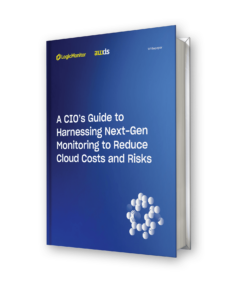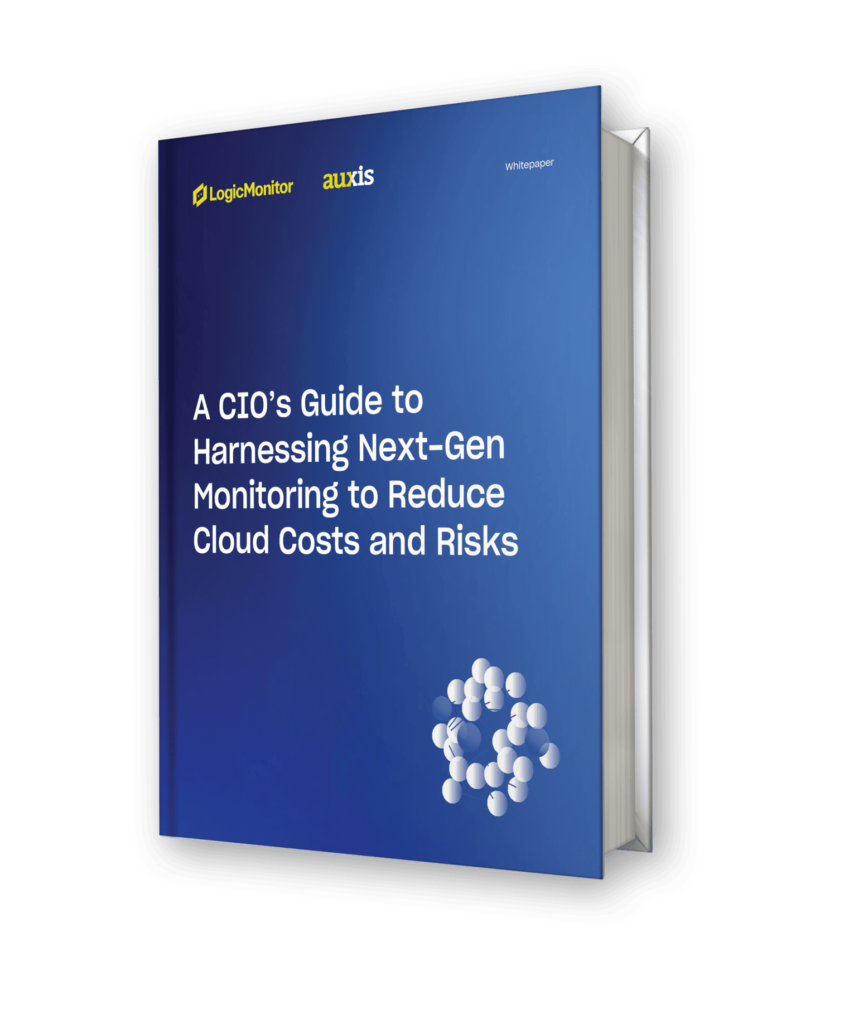A well-structured strategy is essential for moving your business to the Microsoft Azure cloud successfully. Cloud migration pitfalls lurk near every click – risking significant impact if they aren’t addressed early in the process.
At this point, the benefits of cloud-first infrastructure are undisputed – delivering unparalleled agility, faster time to delivery, 24/7 redundancy, attainable cost efficiencies, and enhanced opportunities for innovation that enterprises need to thrive in the modern business environment.
Nearly 70% of organizations accelerated their cloud migration strategy over the last year – pushing the percentage with most or all IT infrastructure in the cloud from 41% to an expected 63% before the end of 2023, according to Foundry’s 2022 Cloud Computing report. According to the same report, around a third of IT budgets are currently allocated to cloud strategy.
But despite the technology’s promise, 1 in 3 cloud migrations fail – and only 25% of businesses successfully meet migration deadlines, according to an eWeek report.
96% of IT leaders experience significant challenges implementing cloud strategies, Foundry reports. Unfortunately, a troubled migration can have serious consequences, including major overspending, lost data, weakened security, and even re-migration back to on-premises systems.
Let’s examine the 5 biggest cloud migration pitfalls that threaten to derail Azure migrations – and best practices for avoiding cloud risk.
Common cloud migration pitfalls that threaten Azure success
Cloud Migration Pitfall #1. Lacking a strong migration strategy.
Too many migration teams dive in before they understand what they are moving – and why. Crafting a clear, well-defined strategy and execution plan sets the stage for cloud success.
Consider:
- What’s your motivation? Whether you are responding to a critical business event like an acquisition or want to optimize operations and costs, take time to identify your key business drivers for moving to the cloud and how they align with corporate strategy. While course adjustments can be made along the way, knowing your endgame helps you plot a high-level roadmap for how to get there.
- What business outcomes do you aim to achieve? Documenting desired outcomes focuses your strategy and fosters enthusiasm enterprise-wide. For instance, this can mean achieving cost reductions by reducing capital expenses for hardware and software; expanding your global reach through Azure’s worldwide datacenters; increasing reliability with cloud backup and disaster recovery, and more.
- How will you manage costs? Cost management is a critical component of a successful migration strategy. More than 60% of enterprises cite cost containment as their biggest cloud concern, with more than a third exceeding cloud budgets by 40%. Cloud providers offer pay-as-you-go plans as well as heavy discounts for pre-booking capacity. Other smart strategies are also available, like auto-scaling which avoids wasted spend by right-sizing resources to meet fluctuating demand.
Cloud Migration Pitfall #2: Misunderstanding your performance and availability needs.
Starting a migration without a clear understanding of your current environment risks business-disrupting outages. It also can bring hefty costs: more than 60% of IT outages lead to at least $100,000 in losses.
Documenting your performance and availability needs before migration starts helps you choose the right Azure services and configurations, avoiding stalled projects and costly rework. Understanding your workloads also makes it easier to optimize cloud expenditure.
With comprehensive discovery capabilities, the Azure Migrate tool delivers end-to-end visibility into your current infrastructure. It can also assess if on-premises servers, SQL servers, and web apps are ready for Azure migration.
Using Azure Migrate ensures a complete inventory of your current state – including usage characteristics like CPU and memory for each server – that helps build your capacity/consumption requirements and migration plan.
The tool also identifies server and application dependencies. Pinpointing servers that must move together helps map a migration order and avoid outages.
Cloud Migration Pitfall #3: Neglecting security considerations.
Average data breach costs surpassed $9 million in the U.S. in 2022 – more than twice the global average. And 45% of those breaches are cloud-based.
Security should be a top-of-mind priority for your Azure migration – and also tops the list of cloud migration pitfalls. Unfortunately, most organizations don’t realize they have a vulnerability until it’s too late.
Following Azure security best practices during migration is vital to protecting your organization from today’s rapidly evolving cyber-threats. Creating a single point of responsibility for your cloud transition helps ensure sensitive data and assets don’t slip through the cracks.
Your migration team also needs the expertise to build proper security controls into your cloud environment, demonstrating deep understanding of Azure’s ever-changing services.
To meet the unique security requirements of each business, Azure lets enterprises customize solutions from an extensive list of native tools and features. Key considerations for migration include:
- Access control. Put identity and access management policies in place before migration starts. Tools like Azure Active Directory and Role-Based Access Control help prevent unauthorized access while ensuring staff can perform job duties.
- Network security. This should include firewall rules, network segmentation, and transit data encryption.
- Data protection and storage. Utilize encryption and access controls to protect data in use, in Azure Storage, or in transit between devices and Microsoft datacenters. Enabling built-in security features maximizes protection, including backups, soft deletes, and more.
- Monitoring. Powerful add-on monitoring capabilities observe operations and detect anomalous behavior in your Azure environment. For instance, Microsoft Defender for Cloud provides integrated security monitoring and policy management from a central location – detecting threats that might otherwise go unnoticed and working with a broad ecosystem of security solutions to increase visibility and control.
- Governance and compliance. Tools like Azure Policy can help you build policies, processes, and controls for protecting data in the cloud. They also help you achieve compliance with regulations like HIPAA, SOX, GDPR, and more.

Cloud Migration Pitfall #4: Failing to prepare your business and IT staff for cloud transformation.
While there’s no debating the business benefits of cloud transformation, changes that catch stakeholders by surprise or trigger negative disruptions can stall adoption efforts.
As you modernize your applications and infrastructure, you also need to equip your staff to take advantage of the new agility and flexibility cloud offers. A robust change management approach ensures your people understand and embrace your migration strategy, preparing them for changes to business processes, user experiences, application support, security requirements, and more.
Clear communication and training on what will happen in the current environment, how migration will unfold, and what the new environment will look like are vital to managing confusion and resistance. Preparation also helps avoid slamming technical support with migration issues, distracting IT from innovation.
Cloud transformation is also destined for failure if IT isn’t prepared to migrate and manage your new environment. Assessing and remediating cloud skills gaps should be a front-and-center component of migration planning.
While Deloitte reports that 90% of IT leaders want to expand their cloud environments, 80% say inadequate employee skills hold them back. And the gap between organizational needs and IT’s cloud capabilities continues to widen, fueled by the newness of cloud technology, hefty salary demands from experienced cloud professionals, stiff competition for top talent, and the Great Resignation exacerbating the nation’s already-severe IT labor shortage.
Not surprisingly, 89% of organizations are leveraging third-party partners to develop or deploy cloud solutions, recognizing the need to access skills and experience they don’t possess to drive success, according to Deloitte’s 2022 Global Outsourcing Survey.
Cloud Migration Pitfall #5: Migrating outdated technology.
Outdated technology presents a significant cloud migration pitfall, impeding the process and limiting expected benefits. Before migration starts, it’s important to assess and strategize a solution for upgrading legacy technology that isn’t compatible with Azure.
For instance, most legacy operating systems weren’t designed with cloud architecture in mind, incorporating server features that Azure doesn’t support, reduced scalability and growth options, and limited vendor support. Migrating unsupported technology also creates core-level vulnerabilities to cyber-threats
Upgrading servers and services to newer technology addresses these issues. You can also start from scratch, building new solutions inside Azure and running legacy applications on-premises until replacements are ready to go live.
Solve the cloud skills gap with the right cloud partner
Moving to the cloud is complex – and hidden cloud migration pitfalls litter the journey. IT’s ongoing labor shortage creates additional challenges, leaving most IT Departments without the skills or expertise to tackle cloud risks successfully.
A quality third-party partner holds the key to sidestepping cloud migration pitfalls successfully, with proven experience providing a smooth cloud transition for a wealth of clients. Nearshore firms solve the cloud skills gap as well, delivering consistent access to top talent via a deep pool of high-quality tech resources in Latin America.
Even in the face of a potential recession, CIOs’ commitment to cloud investments isn’t waning. The right partner can help you steer clear of common migration mistakes and reap the benefits of a cloud-first future.
Want to learn more about meeting the needs of your business with a cost-effective, reliable infrastructure platform running on Azure? Schedule a consultation with our Cloud Services experts today!




